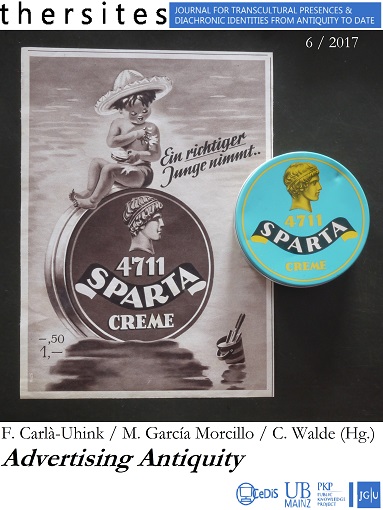Vol. 6 (2017): Advertising Antiquity

While studies in the field of Classical Receptions have flourished in recent years, in particular regarding the visual and performing arts, advertising has until now been substantially neglected, owing to its (elitist) exclusion from many definitions of “art” or “culture”. But advertising – through its very aim to appeal to a broad public – is a highly relevant indicator of the presence, significance and symbolic value of Classical Antiquity in popular culture. Ancient themes and figures are in fact regularly present in modern Western advertising, constituting familiar reference points in which many of the “values” that ads attempt to communicate find a reliable symbol or pictogram that can be immediately recognized by the public – Hercules (for strength) being possibly the most obvious example. Similarly, the high prestige attributed to the Classical world and its knowledge until just a few decades ago is often used in the Western world to confer an immediate credibility to the product or element being advertised.
Ancient forms of advertising have also been substantially neglected in scholarship, eventually studied only by scholars of ancient economy and almost only ever in reference to Rome. Nevertheless, as is the case today, adverts were part of everyday life for the inhabitants of ancient cities, who covered their walls with offers, promises and public announcements of every kind, private and official. The very term “advertising” derives from the Latin adverto or “turn towards”, hence also “draw attention to” – a word that captures the very essence of advertising. This paves the way to multiple potential approaches that link to social and cultural studies, such as the relationship between advertising and identity.
This relationship is, once again, central to studying the presence of Antiquity in modern advertising: should the audience identify with the Ancient Greeks and Romans, recognize them as a part of their cultural heritage, or should they feel different from them? How is such a message constructed, and what pre-knowledge of the Classical world do the ad-creators expect from their targeted audience?
As within our multimedia saturated world, ads were also acknowledged and perceived in different ways in ancient times. They could be read or seen but also heard, appearing in the form of inscriptions, paintings, and announcements read aloud by the kerykes/praecones.
This issue therefore contains contributions that, whether they concern Antiquity or the modern world, highlight the multimedia character of advertising and interrogate its multisensorial communication and reception.

